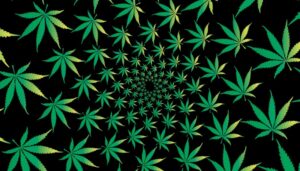Immediate Side Effects Of Marijuana Abuse
Marijuana has several short-term effects, some of which are potentially fatal. The immediate side effects of Marijuana include:
- Paranoia
- Elevated heart rate
- Overeating
- Impaired motor function
- Impaired memory
- Impaired cognition
- Anxiety
- Altered sense of time

Long-Term Effects Of Marijuana Abuse
While the science is far from definitive on long-term Marijuana side effects, there isn’t much knowledge about them. While scientists have drawn comparisons despite the fact that there is no apparent clear cause and effect, some of the observed long-term consequences include:
- Mood swings
- Lung infections or other breathing problems
- Panic attacks
- Worsening symptoms in those with schizophrenia
There have been research suggesting that marijuana use is linked to an increased risk of mental health issues like sadness or anxiety.
Intervention For A Marijuana Problem
If Marijuana is preventing you or someone you care about from living a healthy and productive life, an intervention might be a useful technique to assist you or them make a change. People who have become hooked on Marijuana are frequently unconvinced that they have an issue, necessitating the aid of others on the outside to expose what they cannot see themselves.
Parents of teenage users may stage an intervention to educate and persuade their children about the risks of a drug that is rife with conflicting and often contradictory information. Learn more about how to conduct an intervention.
Marijuana Withdrawal, Treatment, And Next Steps
According to some users, quitting Marijuana has produced withdrawal symptoms after years of usage. The major signs of Cannabis withdrawal are psychological rather than physical, unlike those from heroin or alcohol cessation.
Irritability, sleeplessness, cravings, sadness, restlessness, altered sleep habits, eating patterns and anxiety are all symptoms of quitting marijuana once and for all.
The symptoms of drug withdrawal typically appear within the first 24 to 72 hours after the user’s last usage, peak in the first week, and conclude within one to two weeks. Sleep difficulties may persist for more than 30 days. The length of time that post-acute withdrawal symptoms (PAWS) endure is debatable; some studies estimate a duration of up to 12 months, while others suggest 18 or 24 months. Restlessness, irritability, agitation, decreased appetite, reduced attention, increased anxiety, difficulty with decision-making abilities, declining performance as compared to prior usage of marijuana
People who want to quit Marijuana may find therapy an effective tool for overcoming the emotional hurdles of quitting. Treatment often includes a therapist who can lead patients through challenging periods as well as groups that provide consolation. If you or someone you care about need assistance locating treatment, contact a treatment provider.
How Long Does The High Last?
The duration of a marijuana high can last anywhere from an hour to a few hours. In general, the length of the high will be determined by the user’s tolerance level, the marijuana’s potency, and how it was ingested. Marijuana may remain in your system for days to months after use depending on the test used, which might indicate usage for weeks or months before testing.
Take Our Marijuana Addiction Self-Assessment
If you or someone you know is struggling with a cannabis addiction, take the free 5-minute marijuana addiction self-assessment below to see if you have an issue. The 10 yes-or-no questions in this assessment are intended to be used as a helpful tool for measuring the severity and probability of a marijuana use disorder. The test is completely free, confidential, and no personal information is required to obtain the verdict.
Finding Marijuana and Related Paraphernalia
Whether a concerned citizen uncovers drug-related debris by accident or during a search, the finding can either confirm suspicions or reveal that illicit drug use is taking place. It’s worth noting that searching for drug equipment may be considered an invasion of privacy, but it must be weighed against the dangers associated with marijuana abuse. Where should you look now? People who are attempting to conceal their marijuana usage from their neighbors might resort to all sorts of methods.
The following is a partial list of some marijuana-specific types of paraphernalia:
- Rolling papers (usually white or brown)
- Pipes (various materials, such as glass)
- Cigar papers (contents emptied)
- Bongs
- E-cigarettes (to smoke concentrates)
- Roach clips
The following are some places where persons who use marijuana or other drugs may hide drugs or paraphernalia:
- In a carved-out space at the top of a door
- In over-the-counter drug packages
- In an unopened soda can
- In hollowed-out cans
- Under a fish tank
- In the lining of a speaker
- In a drop ceiling
- In the false roof of a bird house
- In a wall outlet
- Between slats of assembled furniture
The next concern when marijuana or paraphernalia is discovered will be determining its age or when it was last used. Moldy old marijuana may be brittle, break into a near powder-like form, and/or have an aged plant-like odor. In some situations, a person might stuff marijuana in an envelope or piece of paper with a date written on it.
The age of equipment may be difficult to determine. The burn residue of marijuana would darken a well-used bong or pipe. The bong or pipe might be hot or warm in cases where the use of marijuana is recent. When marijuana smokers make a “blunt,” they discard the tobacco contents, which may then be found in the garbage or bits on the floor. Edibles have an odor that can become apparent, particularly if they contain high levels of cannabis.
